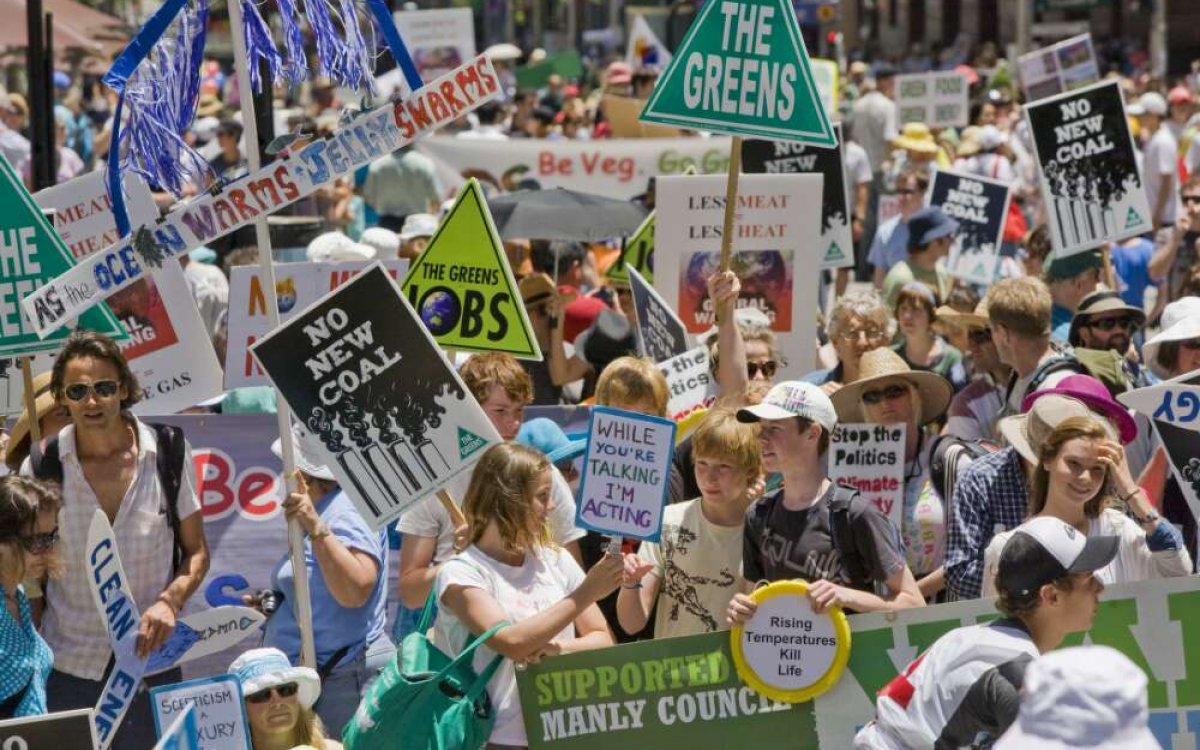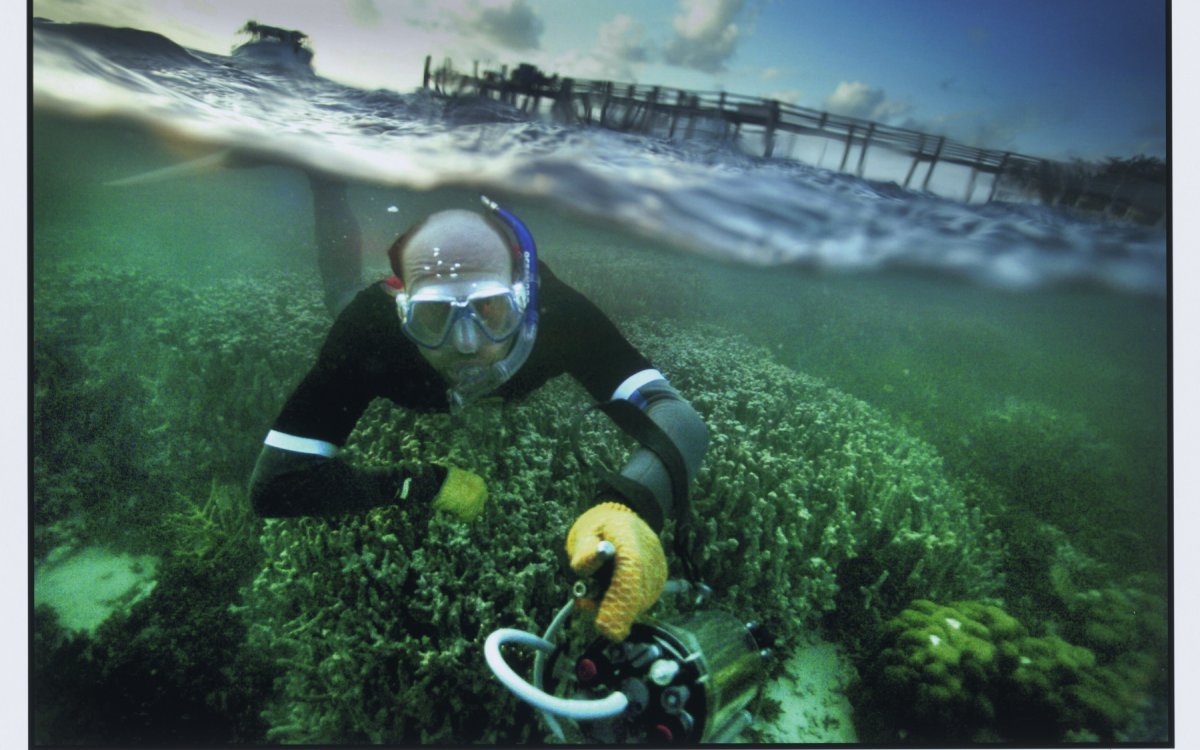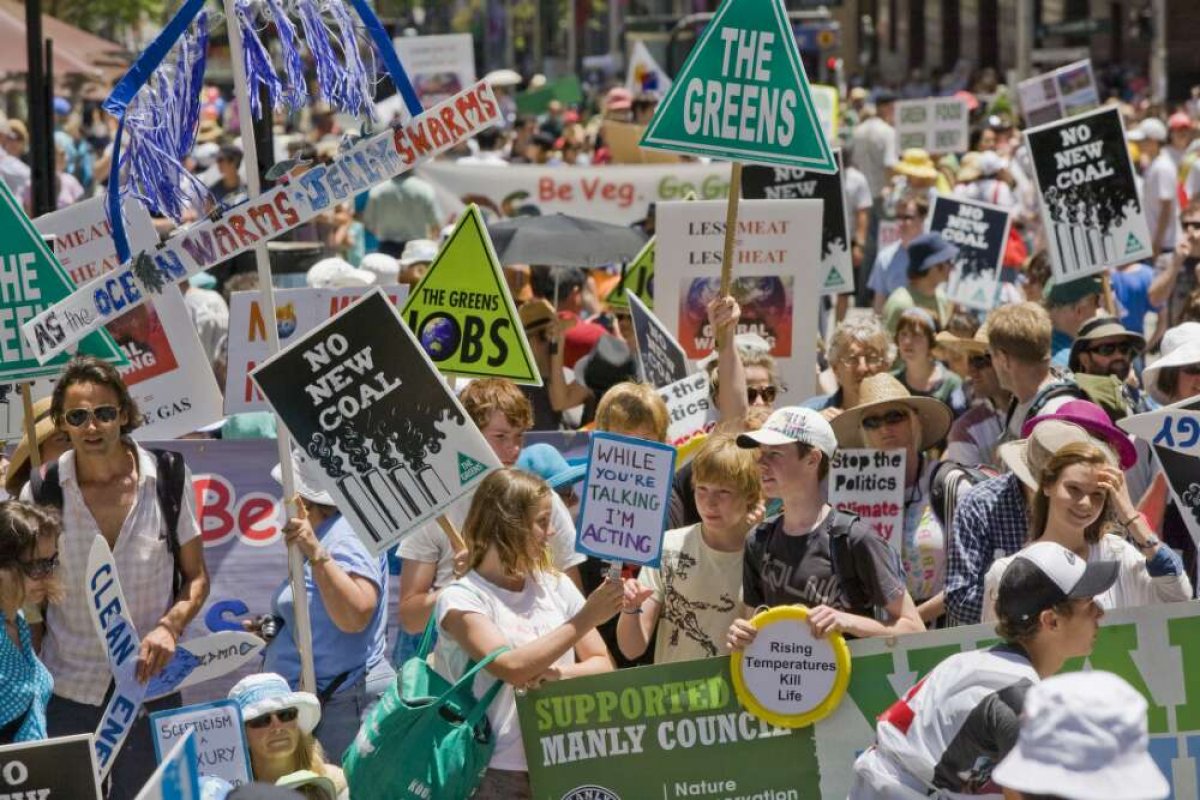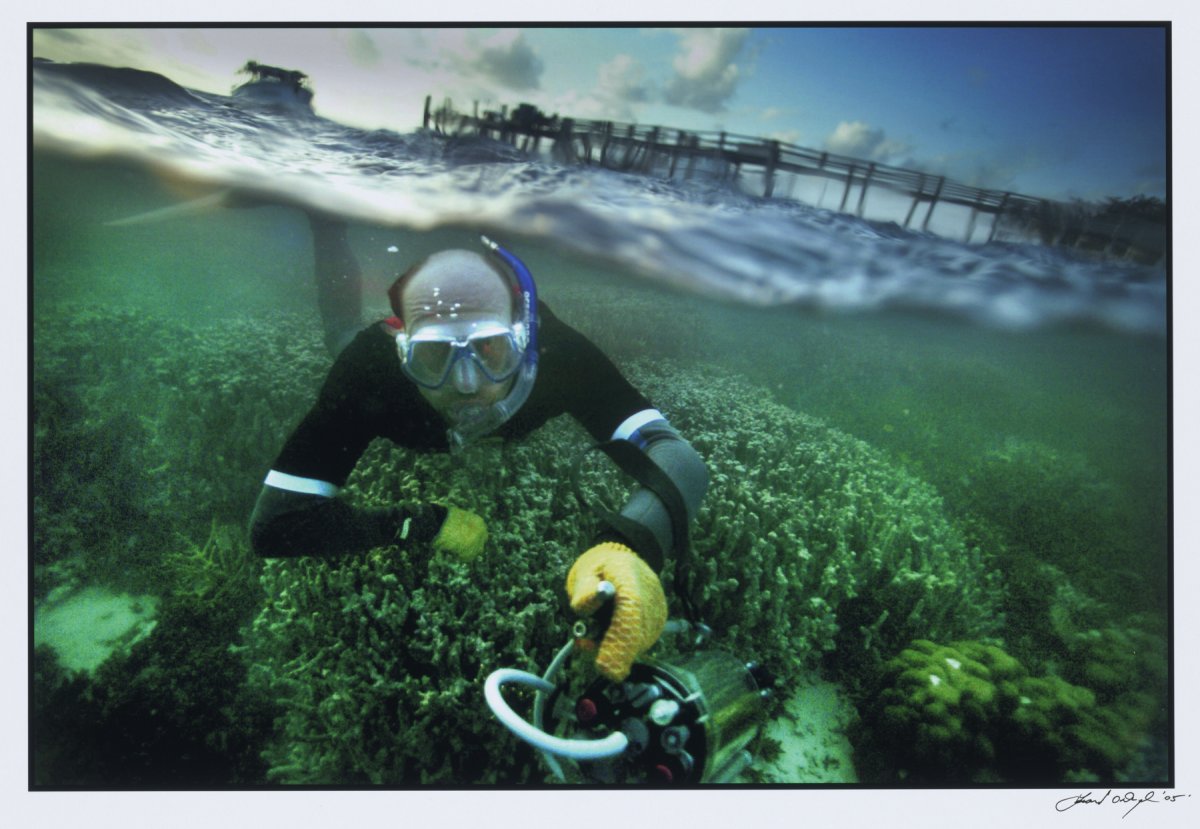
McDougall, Wendy, 1961-. (2009). Placards on display during the Walk against warming , Martin Place, Sydney, 12 December, 2009 [picture] / Wendy McDougall. http://nla.gov.au/nla.obj-138025570

O'Dwyer, Simon, 1969-. (2005). Marine botanist Peter Ralph, surveys the reef with a fluorometer to measure stress levels in coral algae, Heron Island, 17 November 2005 [picture] / Simon O'Dwyer. http://nla.gov.au/nla.obj-148451336
Climate Change
Discuss what students can do on a daily basis to help slow down climate change. This could include:
- recycling, to help reduce emissions
- cutting down on the use of plastics
- turning off home appliances when they’re not being used
- walking, cycling and using public transport for travel
- buying locally grown food and locally made products
- using a clothes line, rather than a tumble dryer
- planting trees, to absorb more carbon dioxide and create more oxygen.
Get the class (in small groups or as individuals) to research, identify and list the following:
- non-renewable energy (e.g. fossil fuels such as coal, oil and natural gas)
- renewable energy (e.g. solar, wind, wave, biofuels).
Discuss the types of energy used both at home and school. How could you reduce the use of non-renewable energy at home and at school?
Create a diagram of a house or your school identifying the non-renewable energy sources and showing the renewable energy sources that could replace them.

